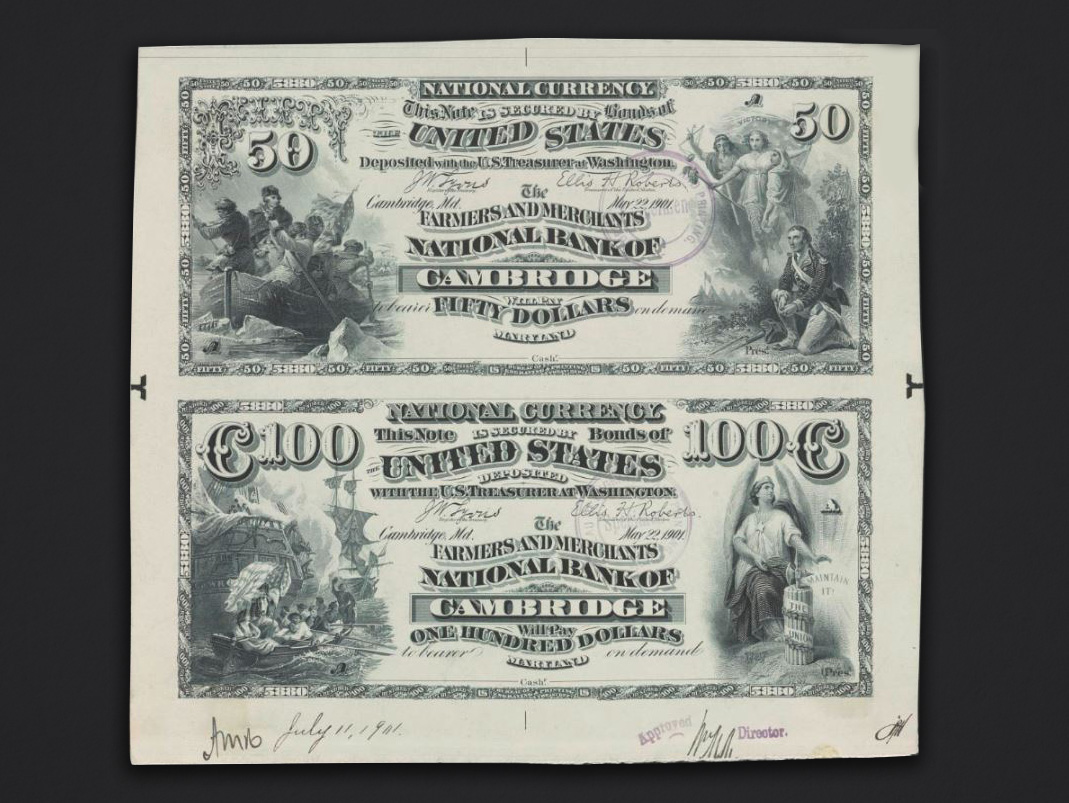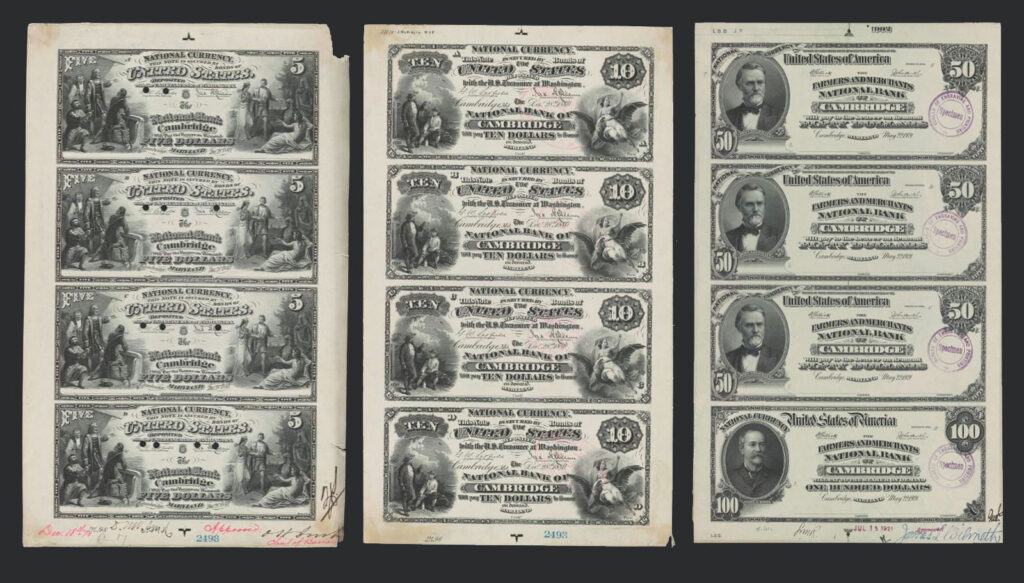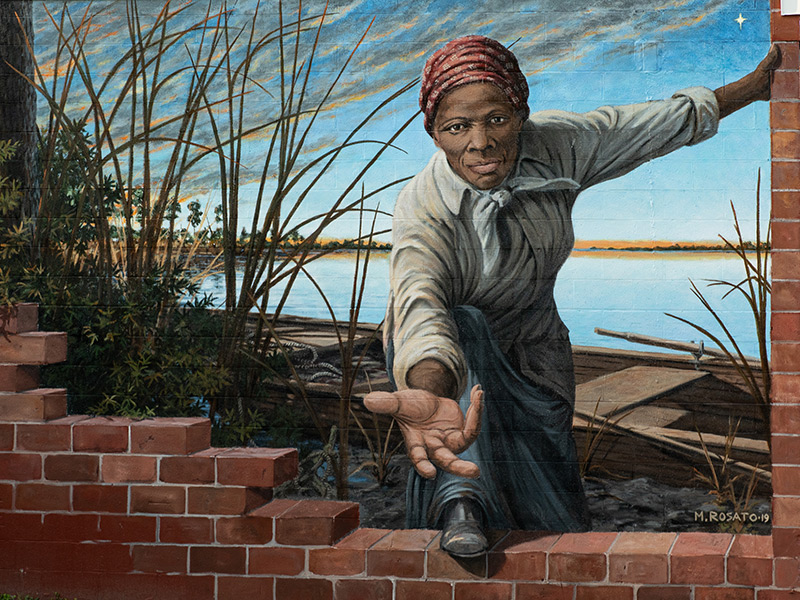The Emerson E. Harrington Bridge, now the old fishing pier next to our site, marked an economic boom for Cambridge in the 1930s, becoming the first constant direct link northward to Annapolis and Baltimore.

Deep within the bowels of the National Museum of American History, in a hermetically sealed container, lie Federal Reserve notes from the 1800s and early 1900s. Why are we talking about this? The U.S. Treasury printed these specific dollar bills for the “Farmers and Merchants National Bank of Cambridge” and “National Bank of Cambridge.” Before 1862 the Treasury issued Demand Notes; each Demand Note was immediately redeemable in gold or silver “upon demand” at seven specific national banks. However, in an effort to standardize and unify currency around the country, Congress authorized a new class of currency known as “United States notes” or “Legal Tender notes.” These notes replaced Demand Notes and circulated until 1971.
By 1869 The Bureau of Engraving and Printing began engraving and printing the faces and seals of U.S. banknotes. Before this, U.S. banknotes were produced by private banknote companies and then sent to the Bureau of Engraving and Printing for sealing, trimming, and cutting. By 1874 congress officially recognized the U.S. Department of the Treasury’s Bureau of Engraving and Printing (BEP) with a specific allocation of operating funds for the fiscal year 1875. Two years later, Congress mandated that the U.S. Department of the Treasury solely perform the engraving and printing of notes, bonds, and other securities of the United States.

These unique notes mark a special time in Cambridge when industry was booming, and the City was making a name for itself as a maritime and aqua-culinary manufacturing giant. These two banks had enough money changing hands to request their own Demand Notes. This is just another representation of how Cambridge, though small, has been a part of big moments in history.
Related Posts
Near and around Cambridge Harbor there are various destinations focused on preserving and honoring the legacy of Harriet Tubman. Born into the chains of slavery in Dorchester County in 1822, made her escape north in 1849. Over a dozen times Tubman risked her life to lead enslaved friends and family to freedom as a conductor of the Underground Railroad.
With much rejoice from the Cambridge Community, the Cambridge-Maryland Hospital first opened its doors on November 17, 1904. It sat on the shores of the Choptank River adjacent to the Rose Hill community, where our site sits today.



